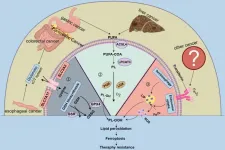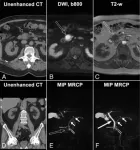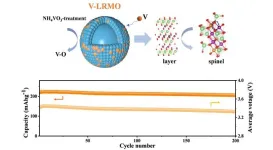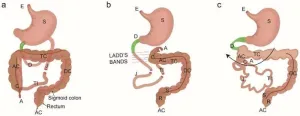Exploring the systematic anticancer mechanism in selected medicinal plants
2024-11-08
(Press-News.org)
Cancer remains one of the leading global causes of mortality, with an estimated increase in cases due to lifestyle, environmental, and genetic factors. Despite advancements in treatment, cancer's complexity and the side effects of conventional therapies necessitate alternative approaches. Medicinal plants, long valued for their therapeutic properties, have shown promise in cancer treatment, attributed to their natural phytoconstituents. This review focuses on the anticancer mechanisms of specific medicinal plants and discusses their potential for future therapeutic development.
Anticancer Mechanisms of Selected Medicinal Plants
Medicinal plants exert anticancer effects through multiple pathways, including cell cycle arrest, apoptosis induction, and disruption of signaling cascades. The mechanisms employed by each plant’s bioactive compounds are varied:
Oroxylum indicum - Known for its anti-inflammatory and immunomodulatory effects, its extract has been shown to inhibit cancer progression through the PI3K/AKT signaling pathway and induce apoptosis in oral carcinoma models.
Musa paradisiaca (Banana) - This plant’s bioactive compounds, particularly banana lectin, promote apoptosis in cancer cells and arrest the cell cycle at G2/M, indicating a potent anticancer potential.
Colchicum autumnale - Colchicine from this plant disrupts microtubule formation, inducing apoptosis and impeding cell division in various cancer cell lines. However, its high toxicity limits its direct clinical application, though modifications are being explored to reduce this toxicity.
Catharanthus roseus - The alkaloids vincristine and vinblastine derived from this plant are well-known for their anticancer activities, particularly through the inhibition of microtubule dynamics, which leads to cell cycle arrest and apoptosis in cancer cells.
Psidium guajava (Guava) - This plant has shown efficacy in inhibiting the AKT/mTOR signaling pathway, which is crucial in cancer cell survival and proliferation.
Mangifera indica (Mango) - Mango extracts have been found to influence cancer cell survival by modulating the PI3K/AKT pathway, AMPK signaling, and NF-κB pathway, all of which are associated with cancer progression.
Lagerstroemia speciosa (Banaba) - Its ethanol extracts have demonstrated cytotoxic effects in liver cancer cells by inducing apoptosis and cell cycle arrest.
Moringa oleifera - This plant’s extracts induce apoptosis by enhancing p53 expression, a key tumor suppressor protein, and causing G2/M cell cycle arrest, making it a promising candidate for cancer therapy.
Current Development and Future Perspectives
The potential of medicinal plants in cancer therapy is growing, with current research focusing on isolating active phytoconstituents, understanding their mechanisms, and developing drug delivery systems. However, challenges include variability in phytoconstituent concentration due to environmental factors and potential toxicity from heavy metal contamination. Collaborative efforts among researchers, clinicians, and industry stakeholders are essential to integrate medicinal plants into mainstream cancer therapy.
Limitations
While medicinal plants offer promising alternatives, some limitations persist. Variability in plant composition and concerns over environmental contamination highlight the need for rigorous standardization in phytoconstituent extraction and testing.
In conclusion, medicinal plants with anticancer properties hold significant promise as alternatives or adjuncts to conventional therapies, particularly in their ability to target specific cellular pathways and reduce treatment side effects.
Full text
https://www.xiahepublishing.com/2996-3427/OnA-2024-00012
The study was recently published in the Oncology Advances.
Oncology Advances is dedicated to improving the diagnosis and treatment of human malignancies, advancing the understanding of molecular mechanisms underlying oncogenesis, and promoting translation from bench to bedside of oncological sciences. The aim of Oncology Advances is to publish peer-reviewed, high-quality articles in all aspects of translational and clinical studies on human cancers, as well as cutting-edge preclinical and clinical research of novel cancer therapies.
Follow us on X: @xiahepublishing
Follow us on LinkedIn: Xia & He Publishing Inc.
END
ELSE PRESS RELEASES FROM THIS DATE:
2024-11-08
The University of Cincinnati’s Yasmin Aziz, MD, and Joseph Broderick, MD, coauthored an editorial published Nov. 7 in the journal Neurology analyzing the current use and potential future of alternatives to traditional informed consent in acute stroke trials.
Patient informed consent is a crucial part of ethical clinical trial design and implementation, but time is of the essence for stroke trials. Approximately 2 million neurons die each minute they are deprived of oxygen, and patients are also sometimes incapacitated and therefore unable to consent ...
2024-11-08
Scarlet macaws are a symbol of fidelity and virtue to many people because they are thought to mate for life — but it turns out that they also “play favorites” when feeding their young, making them excellent mates, but neglectful parents.
Fortunately, Texas A&M scientists have developed a way to ensure the birds’ bad parenting results in fewer chick deaths.
Researchers at the College of Veterinary Medicine and Biomedical Sciences have discovered that scarlet macaws purposefully neglect feeding the youngest chicks ...
2024-11-08
An international team of researchers has provided a genetic diagnosis for 30 individuals whose condition was undiagnosed for years despite extensive clinical or genetic testing. The study, conducted by researchers at Baylor College of Medicine, National University of Singapore and collaborating institutions worldwide, appeared in Genetics in Medicine, the official journal of the American College of Medical Genetics and Genomics.
“The story of our findings began with one patient I saw in the clinic presenting an uncommon combination of problems,” said first and co-corresponding ...
2024-11-08
The evolution of gastrointestinal (GI) endoscopy has transformed CRC diagnostics since its early 20th-century origins. Initial rigid endoscopes provided limited visualization, were highly uncomfortable for patients, and only partially visualized the colon. With the introduction of fiber-optic technology in the 1950s, endoscopy began transmitting real-time images, greatly enhancing diagnostic applications for GI conditions. Today, CRC remains a primary target for endoscopic screening due to its high prevalence as the second leading cause of cancer ...
2024-11-08
Chronic liver disease (CLD) is a growing global health challenge, accounting for millions of deaths each year. Its major contributors include metabolic dysfunction-associated steatohepatitis (MASH), alcoholic liver disease (ALD), and hepatitis C virus infection. These conditions are closely tied to hepatic steatosis, a condition characterized by the abnormal accumulation of fat in the liver. Recent genome-wide association studies have identified the 17-beta-hydroxysteroid dehydrogenase 13 (HSD17B13) gene and its loss-of-function variant ...
2024-11-08
Approximately 5,000 people in the U.S. develop amyotrophic lateral sclerosis (ALS) each year. On average, they survive for only two to five years after being diagnosed, according to the Centers for Disease Control and Prevention. The rapidly progressing neurodegenerative disease causes the death of neurons in the brain and spinal cord, resulting in muscle weakness, respiratory failure and dementia. Despite the devastating nature of the disease, little is known about what first triggers the deterioration of motor neurons at the onset of ALS.
Now, researchers from University of California San Diego and their colleagues ...
2024-11-08
The global burden of digestive tract tumors is profound, with these cancers accounting for nearly half of all malignant tumors worldwide. Despite advancements in endoscopic diagnostic methods, which enable earlier detection and treatment, a large portion of patients still receive diagnoses at later stages. For these patients, chemotherapy, radiation, and immunotherapies are often the only viable options, yet resistance to treatment remains common, leading to high recurrence and mortality rates. Research increasingly shows that ferroptosis may be a key mechanism to reverse treatment tolerance. Ferroptosis, characterized by ...
2024-11-08
In recent research published in eGastroenterology, Dr. J-Matthias Löhr and colleagues provide an in-depth review of diagnostic methods for pancreatic incidentaloma—incidental findings often detected during imaging scans intended for other conditions. These pancreatic lesions, which vary in severity, can occasionally signal pancreatic cancer in its earliest stages. However, traditional methods, including MRI and CT scans, are limited by invasiveness, cost, and variable sensitivity to early pancreatic changes.
The research highlights ...
2024-11-08
As demand surges for electric vehicles and energy storage systems, lithium-ion batteries need to deliver higher energy densities at lower costs. While conventional cathode materials like LiFePO4 and Li-Ni-Co-Mn-O are widely used, they often fail to balance performance with affordability. Lithium-rich manganese oxides (LRMOs) have emerged as a potential alternative due to their high capacity and cobalt-free composition. However, their low initial Coulombic efficiency and rapid voltage decay have limited their broader application. Addressing these challenges requires deeper research to stabilize LRMOs for widespread commercial use.
In September, 2024, a team from Guangdong University of Technology, ...
2024-11-08
Gastroschisis, a congenital abdominal wall defect, has transformed from a uniformly fatal condition to one with a 95% survival rate through surgical advancements over the past six decades. The primary goal of managing gastroschisis is to mitigate fetal and postnatal risks, including damage from herniated bowel loops and ensuring effective decompression of the gastrointestinal tract during recovery. This review focuses on both preventative and corrective aspects of gastroschisis management, highlighting innovations in neonatal surgery that improve quality of life and long-term health outcomes.
Definition ...
LAST 30 PRESS RELEASES:
[Press-News.org] Exploring the systematic anticancer mechanism in selected medicinal plants






